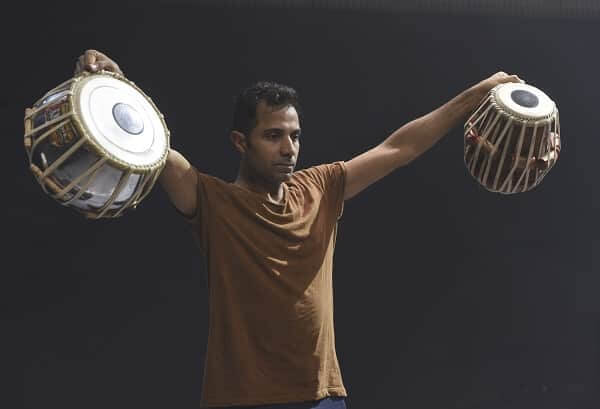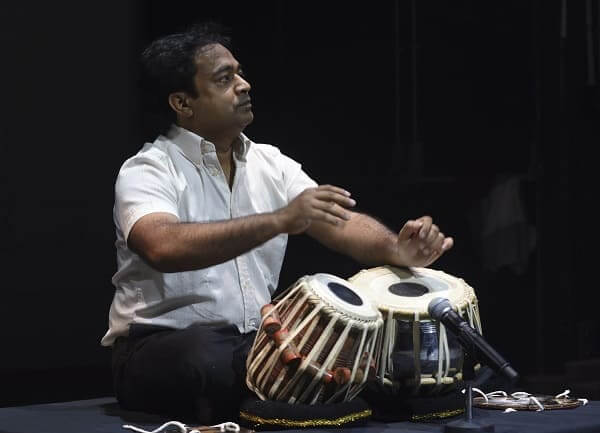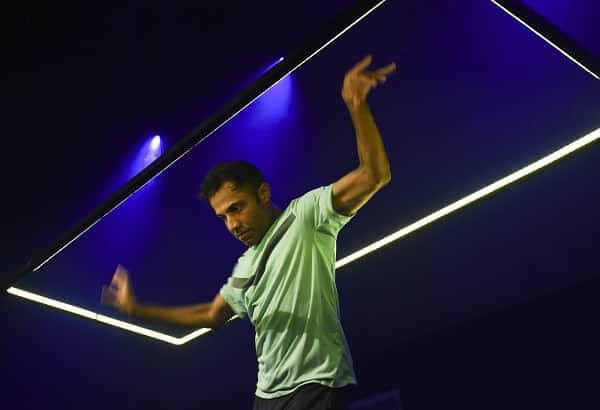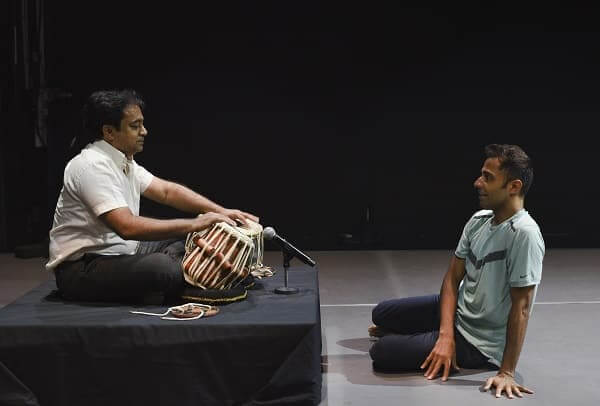As the narrative grows around us about the pathology of a deeply polarised contemporary world, one of the techniques suggested to bridge divides is that of perspective-taking.
In his latest production, Sydney-based contemporary dancer Raghav Handa hones in on this very notion. Calling his work TWO, he sets up ‘the divide’ in a milieu that he understands deeply – and one in which he has worked most of his adult life -the stage.
Under examination here, is the relationship between a dancer and a tabla player, who each bring totally different skills to a performance.
The dancer of course is Raghav himself, and the tabla player, an artiste he has been performing with for over a decade, Maharshi Raval. The real-life partnership between the two grew across many stage performances, and offered Raghav a standpoint from which to explore the idea of differentiated worlds.

At the outset, we see the differentiated worlds play out beautifully in a brilliant jugalbandhi. It is all about ‘side taking’ rather than perspective-taking. Raghav takes the lead and performs a brief routine of free movement dance, informed loosely by Kathak. I can do this, he seems to be saying to
Mahrishi; can you? Maharshi responds to the challenge each time with a perfectly matched tabla phrase. The competition between Raghav’s characteristic style of free movement physicality, and Maharshi’s skillfully drumming fingers, is as engaging as it is effective in setting up the backdrop to this show.
In the classical performance context, their worlds are worlds apart; they won’t, or can’t, get into each other’s spaces.
When Raghav presents his solo dance piece, Maharshi takes his leave from the stage briefly ‘to feed the parking meter’ outside, in what becomes a hilarious interlude. Raghav’s number, a tribute to Elvis Presley as well as a hark back to his own go-go dancer days, clearly does not fit Maharshi’s sensibilities, but he is happy to let his colleague take centrestage temporarily.
But getting into each other’s spaces is what this show is all about. And it is baby steps that are recommended here: simply view the other being the other, and find beauty in that.
READ ALSO: Re-sanctifying the Swastika

As Maharshi indulges Raghav’s interest in the tabla, the borders between their worlds become porous. Like the old masters of this ancient Indian instrument, Maharshi introduces the tabla to Raghav by getting him to hold it first, then placing it close to his ears as it is played. In a wonderfully choreographed segment, the tabla is played as the dancer holds it caressingly, and then as he moves it across his body, allowing its gentle vibrations to reverberate across his very being.
In another highlight of choreography, we see Raghav letting Maharshi have his moment in the limelight, literally, as he physically pushes the mini stage on which Maharshi sits, playing his instrument. As he parades the tabla player around, the dancer is attempting to explore what it is like to ‘give up the power, to share, and to make space for others’.
The humility of it all – and the acceptance and the compassion – is astounding.
With this careful consideration of his counterpart’s artistic perspective, Raghav unravels further enjoyment in his own artform.
And so the scene is set for the melding of worlds. The collaboration is not easy as each power must concede a little, but when original reservations fade, the end result is nothing short of joyous celebration.

As the two different interests compete, complement and finally collaborate with each other, a sense of duality or contrasts pervades right through. Eastern vs Western. Folk vs classical. Casual vs regimented. Playfulness vs rigour. Athletic vigour vs sedate thoughtfulness. Asha Bhosle vs Elvis Presley.
And yet the contrasting paradigms synergise into a thing of beauty, when ‘mutually exclusive’ becomes ‘inclusive and interactive’.
Even the very practice of their individual crafts sits on either end of a spectrum, Raghav reveals at one point. “Maharshi arrives at the venue, plays, and leaves. Me on the other hand, I have to warm up, perform and then cool down.”
Tellingly, Raghav Handa’s TWO is just as much about otherness as it is about togetherness.
TWO was presented by FORM Dance Projects at Riverside Theatres in Parramatta NSW from 18-20 February. It was produced by Performing Lines.
READ ALSO: Pieces to treasure
Link up with us!
Indian Link News website: Save our website as a bookmark
Indian Link E-Newsletter: Subscribe to our weekly e-newsletter
Indian Link Newspaper: Click here to read our e-paper
Indian Link app: Download our app from Apple’s App Store or Google Play and subscribe to the alerts
Facebook: facebook.com/IndianLinkAustralia/
Twitter: @indian_link
Instagram: @indianlink
LinkedIn: linkedin.com/IndianLinkMediaGroup




